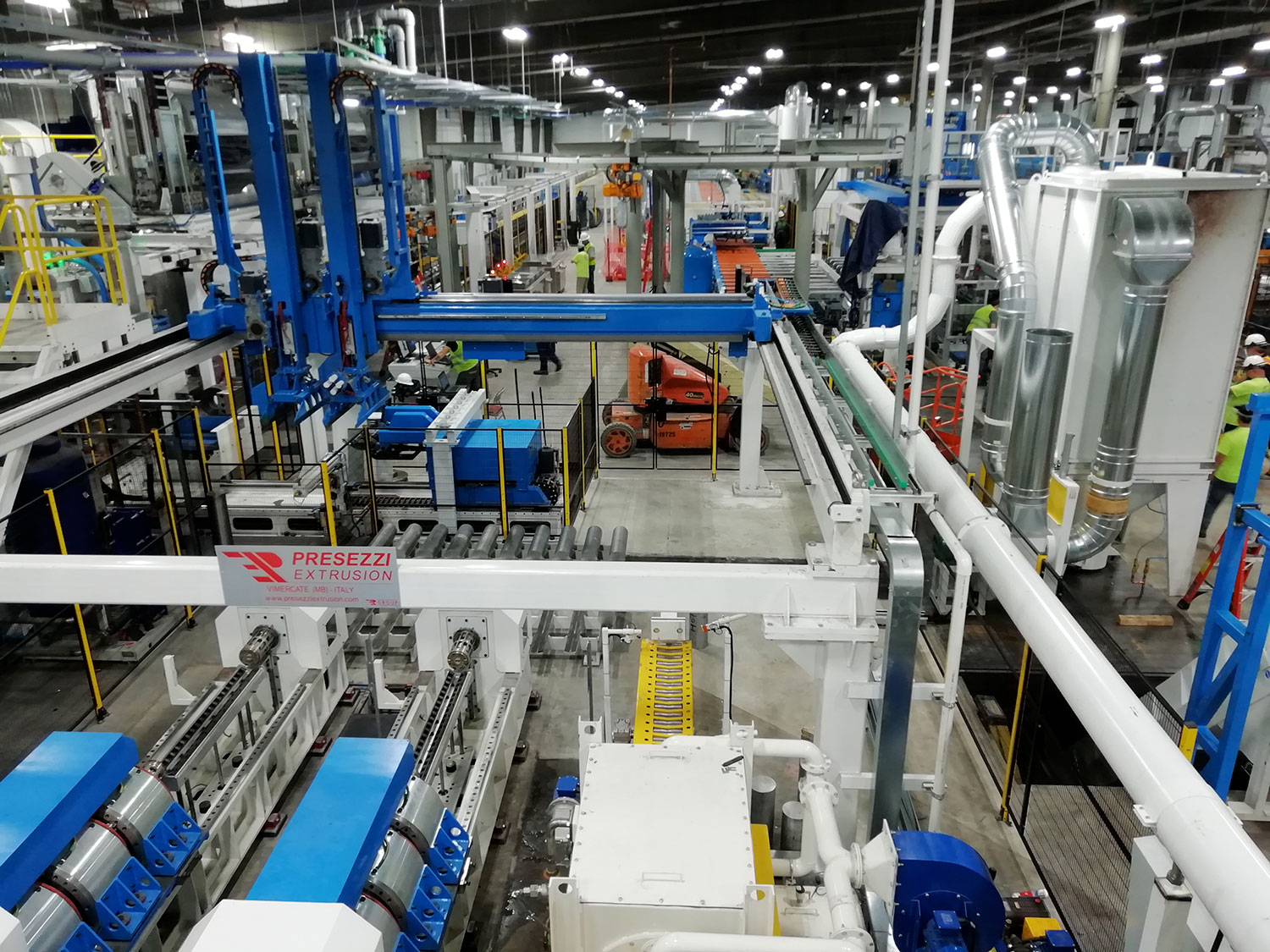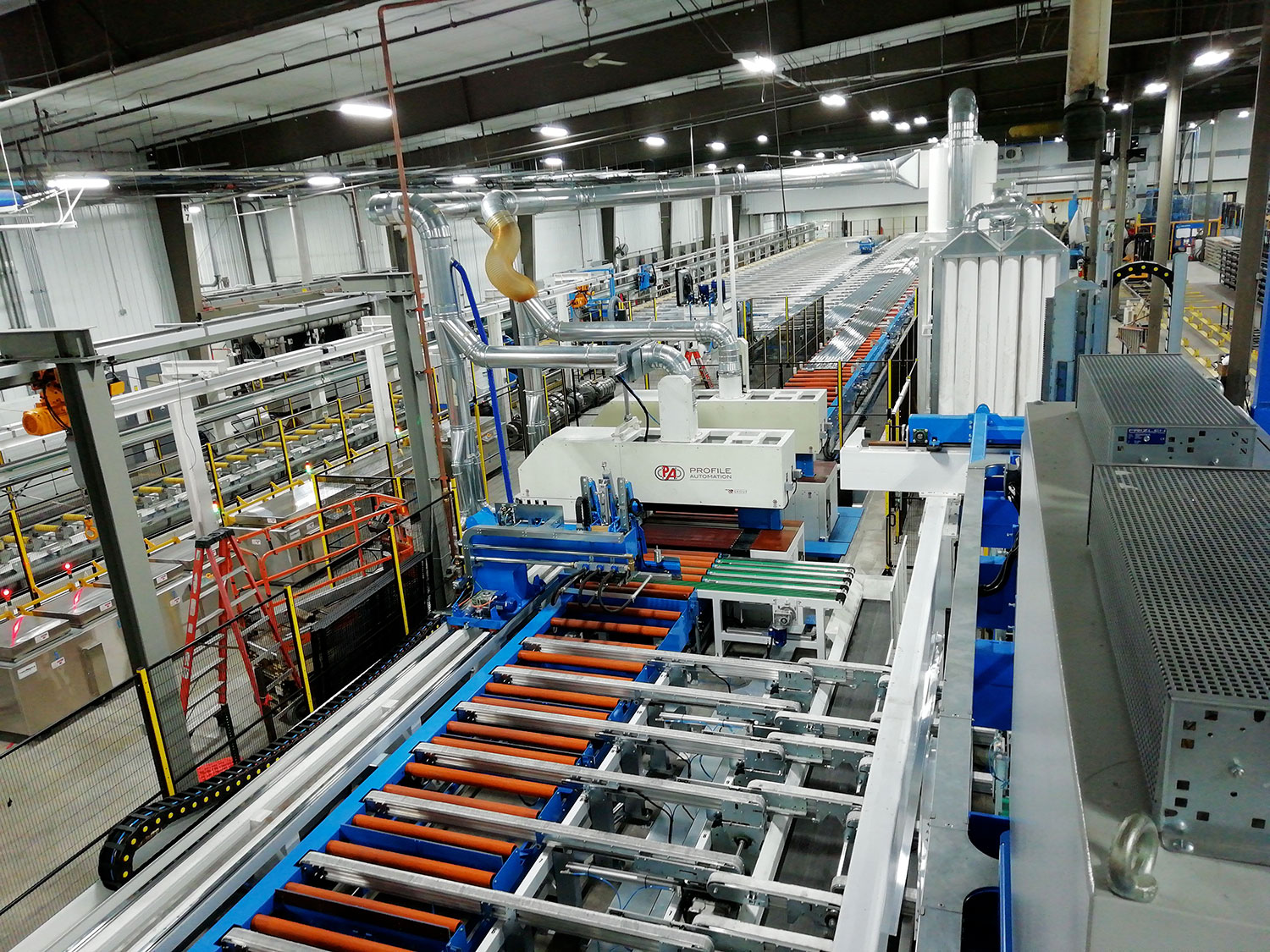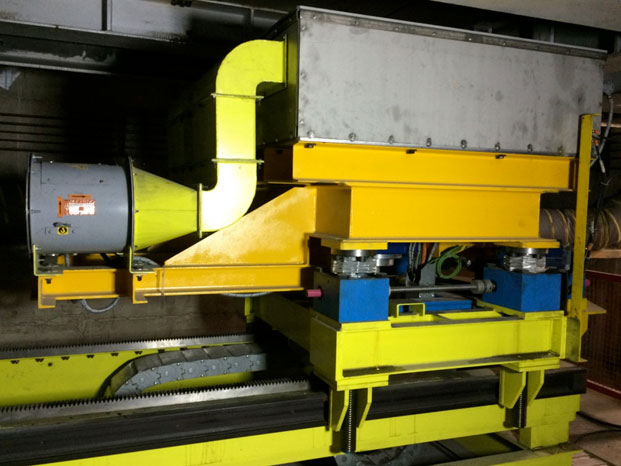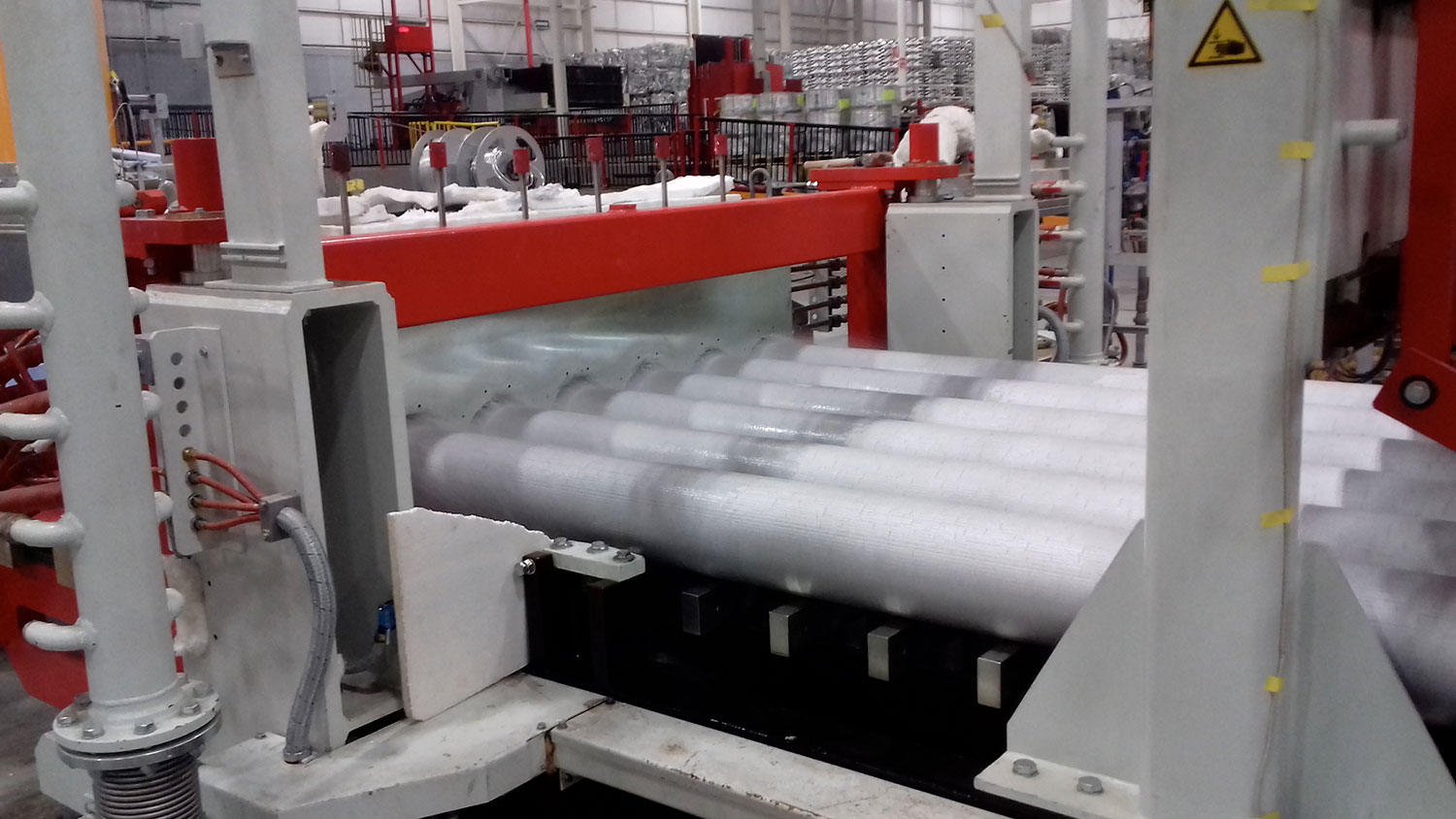PRESEZZI EXTRUSION GROUP – DEVELOPING NEW TECHNOLOGIES
07-10-2020
The R&D division of Presezzi Extrusion Group satisfies the business need to enhance its internal development potential by focusing on innovation, studying and developing new technologies or innovating existing systems with new technical methodologies. In addition to the technological aspects, the R&D projects are managed with the most advanced project management techniques according to a new strategy that provides for a more efficient use of human, financial and technological resources.
Presezzi Extrusion Group is committed to constantly stimulating the creation of innovative ideas. Specifically, the company has implemented an internal process innovation programme driven by competition in the market to establish better engineering practices and technologies as an added value. The goals are to reduce costs and implement better engineering methodologies. In collaboration with academic partners, the company is currently involved in research projects aimed at developing and using new applications in the field of aluminium extrusion.
This approach has generated a large number of ideas, many of which have been developed and are being applied in existing projects, but it has also promoted the diffusion of new concepts on the basis of which new standards have been drawn up. In particular, a project was launched for the construction of an innovative heating and recirculation systems using technology applied to permanent magnets, to extend its application to industrial use, especially in the areas of extrusion plants for non-ferrous materials and casthouses.

The application of innovative methodologies for use in new generation plants brings benefits to the customer since it allows to minimize costs and consumption for the benefit of all parties involved. Presezzi’s goal is to use proprietary technologies to define and impose new KPIs on the market and accelerate implementation in its traditional business areas and in advanced or emerging areas.
“Our strong tendency to be market-oriented in innovation and technology R&D is pushing us to take up the challenge of the revolutionary idea of Industry 4.0 for the digitization of production processes and for the creation of digital and innovative solutions, to increase plant productivity and improve workplace safety,” says Ennio Naletto, technical development manager at Presezzi Extrusion.
Digital choices and widespread automation are characterized, in particular the most effective ones, by very high fixed costs, both infrastructural and organizational. “We must not set ourselves the simplistic goal of digitizing the existing analogue, which in many cases can mean maximizing inefficiencies, we must instead be very selective about the choices, identifying some priority areas of digitization intervention based on the specificities,” he says.
An example of new technologies applied to aluminium extrusion plants are the plants recently installed in North America at the ABC and Alexandria Industries companies despite the installations and commissioning during the period covered by Sars-Cov-2, which hindered the normal development of activities and required an enormous organizational and managerial effort for all those simple steps under normal conditions.

ABC Aluminum, based in San Diego with operational plants in Tijuana, Baja California, Mexico, installed a new modern plant with a 10-in, 36-MN extrusion press and a new eco-friendly aluminium re-melt plant,. Many details of this plant have been designed for the production of a tailor-made product. This added value has allowed Presezzi Extrusion to achieve such performances to the full benefit of its customer. Alexandria Industries in Minnesota replace an existing line with a new high-tech 7/ 8-in, 20 / 26 MN press, which actually is the most modern plant installed in the US.
It is the first installation of two ZPE (Zero Pollution Energy) magnetic heaters which have revolutionized the world of aluminium precision heating.
This new technology has been introduced in 2016 with several models installed and operating all over the world, engineered for different sizes from 6-in to 11-in. “The use of this new technology has proven us with certain data of enormous energy savings,” says Naletto.
The ZPE heaters are in competition with induction heating. The basic principle of induction heating is a variable magnetic field applied to a metal sample, which induces eddy currents. These currents heat the sample by the Joule effect where coils have fixed geometry and magnetic field is alternating. In the ZPE, magnetic field is constant in time and geometry sample or magnets are moving.
Each aluminium alloy has different elecrical and thermal properties. Most induction ovens operate at a fixed frequency. When the billet heats up, the electrical resistivity of the metal strongly increases (even by 100%). ZPE ovens can easily modulate the field-frequency and optimize the heating process of different aluminium alloys, always approaching the optimal heating rate.
In a traditional induction oven, the energy actually required must include: energy wasted in the induction coils, energy wasted due to inefficiencies of the cooling system and energy wasted by cooling-water pumps, cooling fans, insulation transformer.
In a best case scenario the energy wasted is 140 kWh/t, equivalent to an emission of 40 kg of CO2/tAl processed; the total energy consumption on the best induction oven is 250 kWh/t (energy for production). The overall energy efficiency of the ZPE oven is 82% on average; this value includes every component of the system, the energy wasted is 35 kWh/t, equivalent to an emission of 10 kg of CO2/tAl processed, the total energy consumption of the ZPE: 165 kWh/t (energy for production).
The same technology was applied in casthouse area obtaining the most flexible and cost effective magnetic stirrer for the aluminium furnaces industry. This ‘Low Energy Consumption’ stirrer is 100% air-cooled and does not require a water cooling system and water treatment plant, electric power to be applied to copper coils and an insulation transformer.

Without stirring the submerged scrap would take a very long time to melt down as it relies on conduction and convection heat transfer. Stirring the bath breaks this limitation and the heat transfer is greatly increased by convection effects. The Low Energy Consumption stirrer creates a strong turbulent flow mixing the melt in the vertical and horizontal directions. This new stirrer ensures better efficiency than any other conventional electromagnetic system (there is no heat loss by Joule effect). Moreover, the costs of installation and maintenance are negligible. The economic impact of this new stirrer on business costs is about four times less than the conventional electromagnetic stirrer.
The combination of rotation and translation movements contributes considerably to the drop melting decrease (maximizing the scrap metal return) and to the minimization creates a strong movement up to the bath maximum level. The aluminium bath, before each transfer in the holding furnace, will be homogeneous thermally (variation of 2-3 °C between start and end of transfer) and chemically (the heavy elements such as Fe and Mn become homogeneously distributed over the whole bath volume avoiding the stratification phenomenon).
The difference between roof temperature and bath temperature increase, leading to a better utilization of the energy from the burners and reducing dross formation: colder bath surface is less oxidizable. Furthermore, gas consumption and dross formation are minimized. Working with the Low Energy Consumption stirrer instead of traditional electromagnetic technology generates annual energy savings (referred to a stirrer use of 20 hours per day and 330 days per year) between 450 and 550 MWh depending on furnace capacity, melting rate and charging mix.

Since the introduction of energy saving measures to the hydraulic part of the press, Presezzi Group has always aimed at reducing energy consumption. This is acknowledged by customers and is based on state-of-the-art technology and the creation of innovative solutions for new production requirements, which are rapidly evolving for aluminium, copper and brass alloy applications.
As a result of its continuous striving for technological improvements, Presezzi Extrusion began to develop a new type of hydraulic system in 2007. Presses designed and produced
until then all used (with no exception) variable displacement pumps coupled with servovalves and standard-type electric motors.
In 2009, after 18 months of research and development activity, stemming from the company’s choice of providing clients with a considerable energy saving while maintaining and / or improving the production performances and the quality of the extrusions, Presezzi presented the PE. Energy Saving System (PE. E.S.S.).
More news is coming in the near future and these innovations will still place the Presezzi Group at the centre of innovation in the aluminium extrusion field.